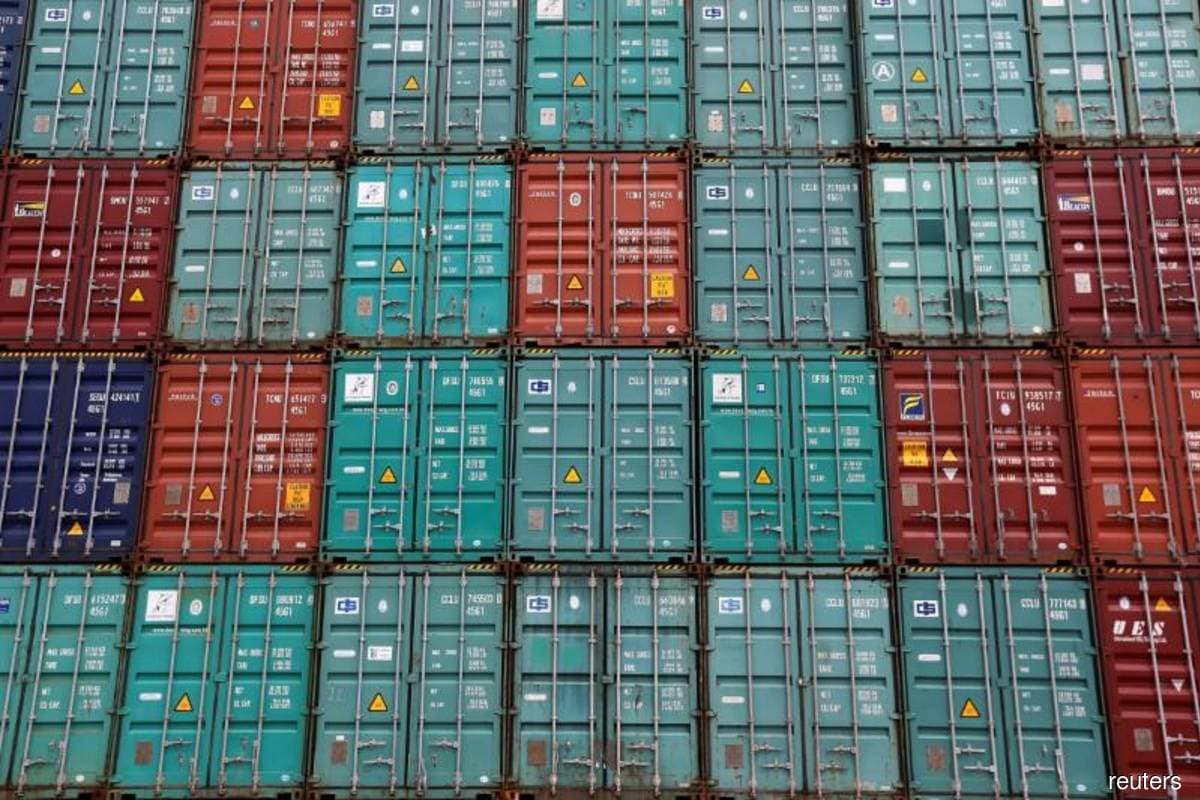
KUALA LUMPUR (Nov 17): Malaysia’s October exports expanded at the slowest rate in 15 months, growing 15% year-on-year (y-o-y) to RM131.6 billion, driven by increases in domestic exports and re-exports.
The export value was lower than the RM144.3 billion recorded in September.
Meanwhile, October imports increased 29.2% y-o-y to RM113.5 billion. This brought total trade in the month to RM245.2 billion.
As imports grew faster than exports, the trade surplus shrank to RM18.1 billion versus a record high of RM31.8 billion in September.
Chief statistician Datuk Seri Dr Mohd Uzir Mahidin said in a statement that domestic exports totalled RM101.2 billion, which stood at 76.9% of total exports, and grew by 10.8% y-o-y.
“Meanwhile, re-exports were registered at RM30.4 billion (23.1% of total exports), widening by 31.6%.”
Uzir further explained that the rise in exports was due to higher exports to Singapore by RM4.1 billion, followed by South Korea (RM1.9 billion), and Japan (RM1.8 billion). Imports, on the other hand, were buoyed by increased imports from Saudi Arabia by RM5 billion, China (RM4 billion), and Taiwan (RM3.3 billion).
In terms of exported products, Uzir said petroleum products increased by RM8.1 billion, followed by electrical and electronics products (E&E) (RM8 billion), liquefied natural gas (RM4.1 billion), and crude petroleum (RM1.5 billion).
Meanwhile, the rise in imports was attributed to increased imported crude petroleum by RM6.8 billion, followed by E&E products (RM5.6 billion), petroleum products (RM4.2 billion), and transport equipment (RM3.1 billion).
UOB Global Economics & Markets Research noted that the recent external trade growth outturns in September and October suggest that Malaysia’s merchandise trade activity has entered a soft patch, in tandem with weakening global demand.
“Volatile commodity prices and exchange rates were also factors weighing on the trade growth momentum amid a global tech down cycle. Moreover, other global leading indicators continued to point to rising recession risk going into 2023, sparked by prolonged Russia-Ukraine war, tighter global monetary and financial conditions, as well as China’s Covid zero policy,” the research house said in note on Thursday (Nov 17).
On the trade outlook, UOB said the fall in Malaysia’s manufacturing purchasing managers index from 49.1 in September to 48.7 in October implies further loss of momentum in manufacturing production, mainly due to subdued demand conditions, with the strongest moderation in new export orders since June 2021, which led firms to scale back output for the third month running and the most since March 2022.
“Accordingly, Malaysian manufacturers lowered input purchases for the second straight month and depleted stock levels, resulting in the fastest decline in post-production inventories in seven months. This was also reflected in the second month of growth slowdown in Malaysia’s imports of intermediate goods since September.”
With that, it maintained its cautious stance on Malaysia’s exports, expecting a marginal gain of 1.5% in 2023, versus an estimated 26% expansion in 2022.
“The persistence of a high statistical base for two consecutive years in 2021 and 2022 is also expected to take a toll on the export growth momentum going into 2023. To counter this, the ratification of the Regional Comprehensive Economic Partnership (RCEP) and the Comprehensive and Progressive Agreement for Trans-Pacific Partnership (CPTPP), as well as the semiconductor supply chain resilience-linked memorandum of cooperation signed between the US and Malaysia, are anticipated to be key positive catalysts holding up Malaysia’s export growth prospects in the near term,” it opined.
MIDF Research, meanwhile, expects more moderate growth rates for both exports and imports in the remaining months of 2022, as the low-base effect diminishes.
Having said that, the research house maintained its growth projections for exports at 26% and imports at 30.5%.
“Based on the latest data, external demand remained robust despite concerns over slowing global growth.”
MIDF added that the trade sector stands to benefit from elevated commodity prices, growing external demand for E&E and commodities (petroleum and palm oil), and continued rise in global production and international trade activities. Imports will also expand further on the back of growing domestic demand, and increased business activities and consumer spending.